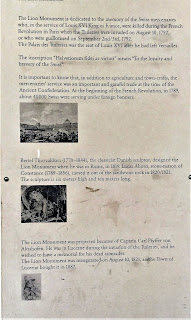



The Kapellbrücke is a covered wooden footbridge, built in 1333, spanning the river Reuss diagonally in the city of Lucerne in central Switzerland.
Named after the nearby St. Peter's Chapel, the bridge is unique in containing a number of interior paintings dating back to the 17th century, although many of them were destroyed along with a larger part of the centuries-old bridge in a 1993 fire, allegedly caused by a discarded cigarette. Subsequently restored, the Kapellbrücke is the oldest wooden covered bridge in Europe, as well as the world's oldest surviving truss bridge. It serves as the city's symbol and as one of Switzerland's main tourist attractions.
Partway across, the bridge runs by the octagonal Water Tower (Wasserturm), a fortification from the 13th century. (Wikipedia)
Named after the nearby St. Peter's Chapel, the bridge is unique in containing a number of interior paintings dating back to the 17th century, although many of them were destroyed along with a larger part of the centuries-old bridge in a 1993 fire, allegedly caused by a discarded cigarette. Subsequently restored, the Kapellbrücke is the oldest wooden covered bridge in Europe, as well as the world's oldest surviving truss bridge. It serves as the city's symbol and as one of Switzerland's main tourist attractions.
Partway across, the bridge runs by the octagonal Water Tower (Wasserturm), a fortification from the 13th century. (Wikipedia)










Lucerne’s Altstadt (old town) is home to an array of medieval squares, cobblestone lanes and a fair share of shops, boutiques and cafes, many of which are adorned with frescoes. The oldest church, St Peter's Church was built in 1178, and the ornate and attractive Fritschi Fountain dates from 1918. Fritschi, a legendary 15th century character whose body is said to be buried under the fountain.





The lion monument is a rock relief carved into the cliff face of a former sandstone quarry, and features a dying lion. Sculpted during the early part of the 19th century, the purpose of the Lion of Lucerne was to commemorate the Swiss Guards who lost their lives in 1792 during the French Revolution.




